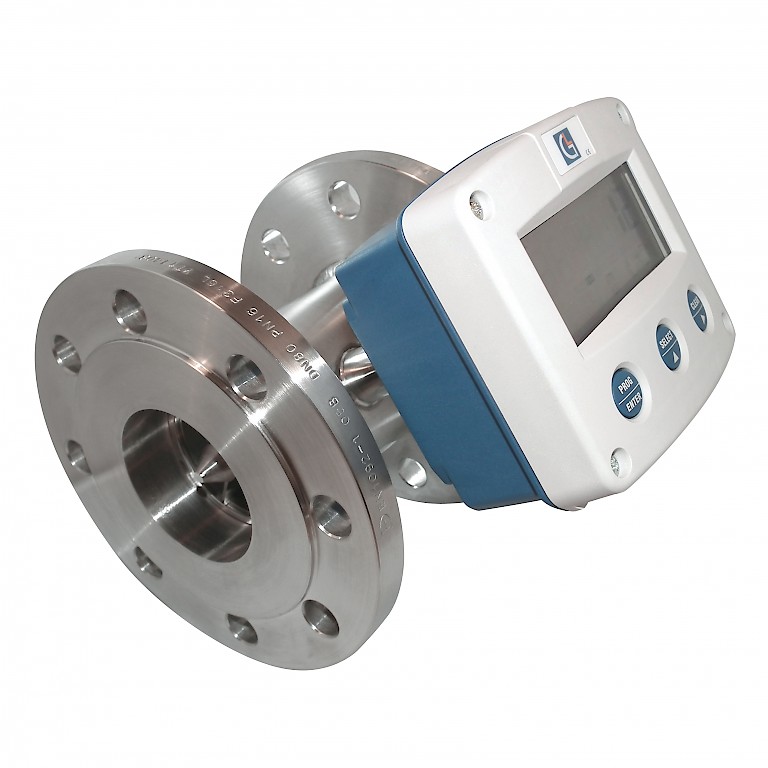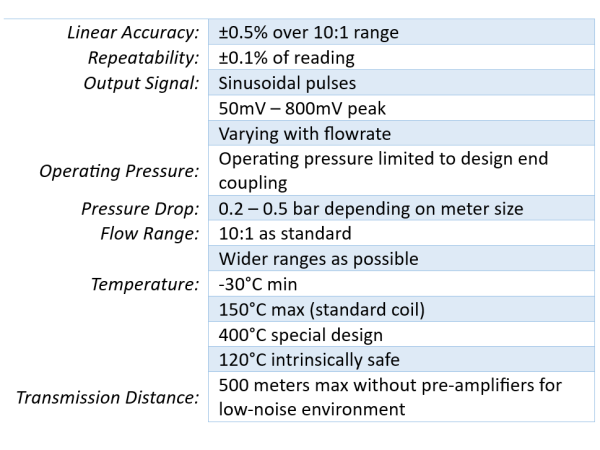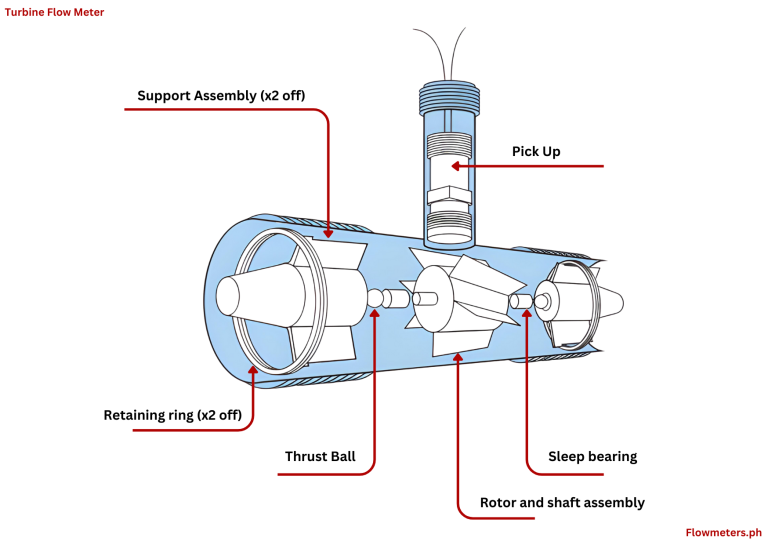What are Turbine Flow Meters?
It is worth defining what a turbine flow meter is, simply because a similar principle of flow measurement is used across a broad range of products. Many standard type water meters are actually using the Turbine Flow Meter principle unless they are the nutating disc type. These water meters are used extensively in commercial, industrial and even households and are popular in water measurement applications due to the fact that the price of a water meter (Woltman Type) is going to be less expensive. On the other hand, a different breed of turbine meter is popular in chemical and oil applications. Flow-Mon excels in these other areas providing simple but robust turbine flow meter designs and products.
Introducing the Flow-Mon Turbine Flowmeter. A flowmeter that measures wide range of liquids including chemicals, oil, hydraulics and solvents.


How does a turbine flow meter work?
Here you can see the major components that make up one of our typical turbine flow meters. This includes the flow meter body, retaining ring, thrust ball, rotor and shaft assembly, sleeve ring and pick up. The rotor looks like a turbine. This is the mechanical part that will begin to rotate as the pressure from the flow acts on it’s rotor blades. The faster the flow, the quicker the rotor will rotate. There is a permanent magnet that is hidden inside the rotor body. As the rotor rotates, so does the magnet rotates which in turn creates a magnetic field which also produces an AC voltage pulse in the pick-up (which is also a coil) and the frequency of this voltage is proportional to the flow velocity. The pulses are picked up by the electronic counter and a formula is applied to calculate the flow rate.
TYPICAL SPECIFICATION:

Can a Turbine Flow Meter measure Acids, Alcohols & Solvents? Get in touch with your application to see if we have a device that fits.
- Acetic Acid (dilute)
- Acetic Acid (glacial)
- Acetone
- Alcohol
- Amidol
- Ammonia
- Amyl Alcohol
- Aqua Regia
- Arsenic Acid
- Beer
- Beet Juice
- Benzaldehyde
- Benzylic Acid
- Benzine
- Bleach Solutions
- Boric Acid
- Brine
- Bromine Water
- Calcium Carbonate
- Calcium Chloride
- Calcium Hydroxide
- Calcium Oxide
- Carbolic Acid
- Carbon Dioxide
- Carbon Dioxide-Water
- Carbon Disulphide
- Carbon Tetra-Chloride
- Milk
- Mine Water
- Mineral Oil
- Sulphur
- Sulphuric Acid
- Toluene
- Tributyl Alcohol
- Turpentine
- Petroleum
- Phenol
- Phosphoric Acid Poric Acid
- Starch
- Stearic Acid
- Mercury
- Creosol
- Methane
- Cupric Chloride
- Methyl Alcohol
- Cyanic Acid
- Methyl-Ethyl Ether
- Sugar
- Dextrose
- Freon
- Furfuryl Alcohol
- Gasoline
- Glycerine
- Hexane
- Hydrobromic Acid
- Oxalic Acid
- Pentane
- Dibenzyl
- Potassium Chloride
Turbine flow meters are widely used in chemical processing, water treatment, and hydraulic applications.
Turbine flow meters are inline type flow meters or otherwise known as intrusive flow meters as opposed to clamp-on flow meters being non-intrusive.
Despite the introduction of new technologies, the turbine flow meter is still as popular as ever probably because it is easy to understand and has been a trusted meter for as long as engineers can remember. It offers a compact design and provides highly accurate flow measurements.
What are the main advantages of Turbine Flow Meters?
- Used for a wide range of fluids including liquid and gases.
- Precise measurement typically 0.5% or better
- Compact and easy to use.
- High turndown ratio 20:1 and 10:1 depending on the application.
- Insignificant pressure drop minimal head loss.
What are some disadvantages?
- Re-calibration is required over an extended period since it is mechanical in nature.
- Requires fairly consistent viscosity.
- Not recommended for extremely low flow since a force is required to turn the rotor.











